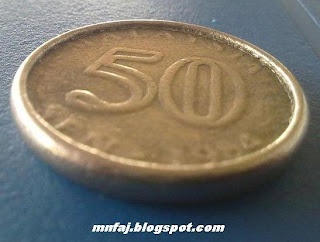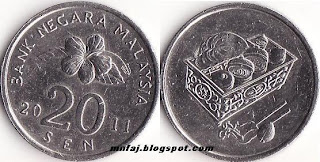 |
| image 1: obverse and reverse of coin 1 |
 |
| image 2: obverse and reverse of coin 2 |
Currently don't have any idea what had caused these coins to be like this. Among the characteristics that can be seen on these two coins are, thinner planchet (thickness of the coin), granular surface on both obverse and reverse, plain edge and slightly smaller in diameter.
Could it be a slag inclusion planchet (I-A-1)case? or perhaps improper alloy mix planchet (1-A-2)? Rolled thin planchet (I-B-2)? Any comments are welcome.
reference: http://www.numismaster.com/ta/numis/Article.jsp?ad=article&ArticleId=9804










